Barriers for People With Disabilities in the U.S: Socioeconomic Problems
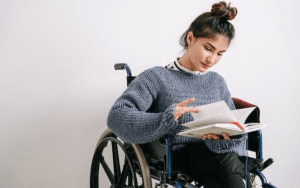 Barriers for People With Disabilities are Physical and digital inaccessibility, social isolation, a lack of appropriate assistive technology, and institutional hurdles in healthcare and the workplace are just a few of the more widespread problems.
Barriers for People With Disabilities are Physical and digital inaccessibility, social isolation, a lack of appropriate assistive technology, and institutional hurdles in healthcare and the workplace are just a few of the more widespread problems.
What is disability?
When introducing disability to a medical condition, we fail to account for the social and economic factors that often influence someone’s incapacity.
This perspective, known as the “medical model,” treats a person’s impairment as a defect that must be corrected or eliminated rather than an integral part of who they are. Medical treatments sometimes fail to consider that many disabilities are permanent and cannot be “fixed” and that many disabled people do not seek a “cure.
” The “problem” under the “social model” of disability, on the other hand, is society and the barriers — both physical and mental — it erects for persons who are disabled. It’s not the individual that has to alter, but the obstacles in their way.
Many formerly insurmountable societal obstacles have vanished or been greatly diminished for people of all abilities since the passage of the Americans with Disabilities Act in 1990.
However, much more has to be done to help persons with disabilities achieve more autonomy and social inclusion. A person’s ability to work, learn, and participate in society depends on their health.
Climate Change is a Fraud? What is Climate Change? Factors, Effects, Solutions
(1) Is Disabilities is A Social Issue?
Conventional wisdom holds that being disabled results from some bodily dysfunction. Thus, consequences of impairment, such as lack of access to the workforce and public spaces, are seen as unfortunate but unavoidable, something disabled people must accept.
This shifts the onus of conforming to these restraints from society to the individuals who make up that society.
People who have disabilities disagree with this viewpoint, stating that it is society itself that disables individuals by failing to provide reasonable accommodations for physical or mental limitations.
The Social Model of Disability, a central concept in the fight for disability rights, is based on this idea. Despite being around since the 1970s and 1980s, adopting the social model can help organizations better serve disabled employees, customers, and audiences.
What is Left-Wing Violence in The United States, and How?
But First, A Little History…


The priority is placed initially on “the individual.”
The advent of the Industrial Revolution brought about a significant shift in people’s perceptions of the economic contributions they could make.
People with disabilities were generally better suited to the autonomy of a traditional, family-based agricultural context. Still, as the workforce migrated to urban centres, they had to keep up with machinery and work according to the pattern of factory shifts.
Disabled persons were increasingly finding it difficult to integrate into modern culture. They were excluded from society and made to rely on charity and government programmes since they were not considered economically productive.
Social Darwinism reigned during the time. At the same time, the medical field became increasingly science-based, classifying various impairments and establishing distinct categories for people with disabilities.
Individual ‘abnormalities’ and how they ‘limit’ (disabled) a person were highlighted; the focus was on what a person could not do as a way to classify them.
Impairment was seen as the sole cause of a person’s disability, defined as functional restrictions or an incapacity to be placed in predetermined groups.
For someone with a disability to have “something tragically wrong with them” was a devastating stigma. A person with a disability was supposed to make the best of their reduced situation without anybody being responsible for modifying the environment. Everyone had to try to blend in with society or risk being isolated and institutionalized.
What is Left-Wing Violence in The United States, and How?
Attempting to Understand Disabled People by Looking at Society
This persisted until the 1970s when activists working to end prejudice against disabled people began to question the widespread stigma associated with their community publicly.
Disabled people, desiring more agency in their lives, started investigating alternatives to the conventional understanding of disability.
Incapacitated people argued in 1976 that society’s refusal to accept and accommodate diversity hindered an individual, not the impairment itself.
This informed the development of the Social Model of Disability. This framework approach has influenced disability attitudes, policies, and laws in the United Kingdom.
If, for any reason, a person cannot physically ascend stairs, the medicalized individual approach would centre on “fixing” that person so that they could do so.
The societal model envisions a ramp being installed in place of steps. Therefore, the person’s inability to climb stairs is not detrimental because the ramp provides access to the same site.
The social model views disability as an additional barrier that prevents persons with impairments from fully engaging in society.
It’s up to the community to make sure everyone can participate. If adjustments aren’t made for those with disabilities or other differences, that’s discrimination.
The rethinking of questions asked of people with disabilities by the Office of Population Censuses and Surveys (OPCS) in the 1980s illustrates this shift in perspective on disability.
- The OPCS question: “Does your health problem/disability prevent you from going out as much as you’d like?
- “The social model asks, “What about the local environment makes it difficult for you to get around in your neighbourhood?”
- OPCS: “Is your hearing problem the primary cause of your communication difficulties?
- “To paraphrase the social model question, Are individuals experiencing difficulties communicating with you, resulting in potential misunderstandings?
- OPCS: “Is your health condition or disability affecting your ability to work at this time?
- “For example, in the social model, one would ask, “Do you have problems at work because of the physical environment or the attitudes of others?”
The initial OPCS questions may be blamed for one’s situation and restrictions on the individual. On the other hand, the social model examines the disadvantages and exclusions that a person with a disability faces daily due to societal barriers.
Saves Lives?
The social model is still essential to persons with disabilities and has made a real difference despite its flaws in the context of a widely diverse impaired population. Liz Crow, a disabled professor, stated in 1996:
“It has allowed us to imagine ourselves unencumbered by incapacity (oppression) and to point our dedication to social change in a specific direction.
It has been essential in empowering persons with disabilities and strengthening their community and political organization. Arguing that the social model has prevented unnecessary deaths would not be an exaggeration.
And it can continue to do so, bringing to light that people with disabilities face social hurdles that we should strive to eliminate forever.
(2) Barriers for People With Disabilities
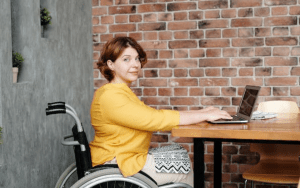

Attitude
One of the most fundamental impediments is the stigma associated with having a disability in the eyes of the general public. Disabled people face additional barriers to full social participation due to stigma, stereotyping, discrimination, and prejudice.
Communication
Anything that makes it more difficult for a person with a handicap to read, write, talk, hear, or understand is a barrier to communication. This includes videos without captioning, text that is too small for persons with visual impairments, or terminology that is too technical for someone with a different way of thinking.
Physical
Any obstacles to movement or access might be classified as physical barriers. Everything from stairs that a wheelchair user can’t navigate to medical equipment that requires a patient to stand.
Policy
A lack of awareness or inclusion regarding the accessibility of activities or programmes for people with impairments creates these hurdles. When it comes to federally financed services, accommodations, or opportunities, government regulations should be accessible to people of varying abilities.
Social
Employment, education, income, and domestic safety are all factors that might act as social barriers to people with disabilities. Disabled people are more likely to be victims of domestic violence and less likely to hold gainful employment or graduate from high school.
These obstacles are detrimental to one’s well-being and put up roadblocks to advancement, financial success, and contentment.
Many People Remain Economically Vulnerable Because of Disabilities.
Medication and regular doctor’s visits, a car equipped for a wheelchair, in-home personal assistance, and adaptive technology and clothing can add thousands of dollars each year to the expense of living for someone with a handicap.
The financial burdens only increase when dealing with a chronic condition. Our poll found that nearly half (44%) of Americans with chronic illnesses and long-term disabilities had depleted their life savings, compared to 24% of those without disabilities.
The percentage of disabled people who report going hungry, cold, or homeless is nearly three times as high among the chronically ill as among the healthy (12% vs. 29%).
Sixty-four per cent of those who are chronically sick and have a disability report wanting to work but being unable to. More than half of these persons (58%) also said they could not perform their job duties as effectively after being critically ill. Only about a third of extremely sick people who are not disabled encounter these problems at work.
Inadequate Local Resources
Long-term services and supports (LTSS) refer to the aid with things like getting around town, preparing meals, and taking care of personal hygiene that people with disabilities frequently need.
“It is worth noting that while some disabled individuals may not require personal care attendants, those with significant disabilities may necessitate round-the-clock assistance,” explains Karp. Finding reliable, long-term assistance can be challenging.
More and more persons with disabilities prefer independent living versus institutional care. Despite this, As a result of the insufficient availability of community-based care systems, it is not uncommon for individuals with disabilities to be placed in clinical settings, regardless of whether it is appropriate or desired.
as noted by Henry Claypool, policy director of the
Advocates for individuals with disabilities argue that our society lacks respect for them since we don’t allow more of them to live in the community.
People with “a different set of biological circumstances” are “overmedicalized,” as Pusch puts it. Labels like “patients” and “public welfare recipients” dehumanize people despite their intrinsic value.
Isolation and Emotional Strain


Social isolation is another major problem for those who are disabled, and it has been linked to serious health consequences, including premature mortality.
“Physical and social isolation are problems that might develop when a person’s handicap includes a mobility restriction. Karp believes that melancholy and anxiety can set in when a person’s ability to interact socially with others is limited because of their environment.
Seventy-one per cent of those with serious illness and a long-term handicap, compared to 46% of those seriously ill without a disability, reported feeling helpless, anxious, or confused while receiving treatment.
More than half of those with disabilities (57% overall) reported experiencing emotional or psychological difficulties due to their condition, compared to 32% of those without disabilities.
Tips for Keeping Seniors Safe From Scammers
Disabled Students Struggle to Get an Education
The generational transmission of educational inequality is well established. A comprehensive survey of people aged 65 and over found that just 20.9% of those without a disability did not graduate from high school, but this number rose to 25.1% for those with a nonsevere handicap and 38.6% for those with a severe disability (Steinmetz, 2006).
The achievement of advanced degrees varies greatly between countries. U.S. Census Bureau estimates that just 15.1% of people aged 25 and above who identify as disabled have a bachelor’s degree or higher, compared to 33.3% of people in the same age range who do not identify as disabled (2015 Census).
Wellness and Health
Poor health and reduced quality of life have been repeatedly linked to lower socioeconomic status. The person with the handicap and their loved ones may experience emotional upheaval due to the condition.
When an individual’s or family’s socioeconomic level is negatively impacted by a handicap, health and quality of life outcomes are also negatively affected.
Accessibility issues, such as transportation, communication, and insurance, may prevent people with disabilities from receiving health treatment, according to the literature on the topic (Drainoni et al., 2006).
According to studies conducted with adults who cannot walk, health promotion programmes catered to people with disabilities can improve quality of life and reduce healthcare expenses.
The consequences of financial stress on the health of disabled people are illustrated through studies of medication adherence among Medicare participants with disabilities. Cost was a factor in why 29% of disabled recipients didn’t take their medication as prescribed or took less of it.
A large body of evidence shows that family members caring for people with chronic or debilitating diseases put themselves in danger. Caregiving for elderly or disabled family members can be emotionally, mentally, and physically taxing, especially in difficult conditions..
The Reality of Abusers, Abuse, and What to Do
The Disability in Social Security
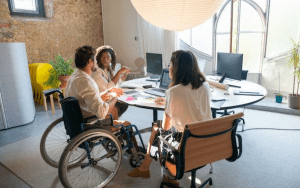

Suppose Congress does not approve moving funds from the retirement fund into the disability fund. In that case, Social Security Disability will run out of money sometime next year.
It has been accomplished before with little to no partisan uproar. It may happen again, even at the last minute, but would it be in time to prevent a catastrophic drop in income for those who need it most?
The difficulty is that Republican lawmakers in Congress see this as a chance to cut spending on social programs. To achieve this, they have started promoting the stereotype that disabled people are all slackers, taking advantage of the system by making up or exaggerating their problems.
The recession (many disabled persons who used to work lost their employment) and an ageing workforce have increased the number of Americans receiving disability benefits. Disability, like any other programme, could be better, but it’s not broken or rife with fraud.
Two-Tiered Punishment for Murder
Keli Stapleton tried to kill her autistic daughter Issy because, she said, she could no longer take her actions. She was shown a lot of compassion by the media, which follows a pattern of portraying tragic cases of parents who kill or attempt to kill their disabled children. In contrast, the children themselves are given less attention.
It’s not quite an epidemic, but the double standard that puts disabled individuals at risk is concerning. Freelance writer and blogger David Perry argues that stories should be written from the victims’ perspective rather than the perpetrators’.
Disabled rights activists aren’t seeking punishment or retribution; they want these killings covered. According to Perry’s analysis, media coverage has blamed people with disabilities for the violence. The roles of victim and perpetrator shouldn’t switch just because one party has a disability.
Why Transgender People Suffering From More Mental Health Issues
Fatalities Caused by Law Enforcement
There has been tremendous anger over the police deaths of unarmed black men in places like Ferguson.
Missouri, and Staten Island, New York, among many others, there has been a growing awareness of a related but separate disturbing pattern: police shootings of disabled people, many of whom are also people of colour, due to a profound lack of training in how to interact with disabled citizens, particularly in violent situations.
Deaf people are notorious for not obeying verbal instructions. People with disabilities often give off an inebriated vibe. Some autistic people have heightened sensitivity to touch, sound, and social interaction.
To add insult to injury, law enforcement frequently makes the incorrect assumption that someone who appears “mentally ill” is also violent.
The underlying denominator is escalation rather than conciliation, like in the case of Ethan Saylor, a man with Down syndrome from Maryland who was tacked and asphyxiated to death by mall security personnel when he refused to leave a movie theatre.
One of the main causes of these kinds of disasters is insufficient or nonexistent police training in engaging with people with disabilities.
Medical Aid in Dying
On the surface, the assisted suicide debate appears to be a battle between “pro-life” religious fundamentalists and “progressive” secular liberals. People who experience disabilities have a unique viewpoint that falls outside of either of these camps but is rarely considered.
Many people believe that making suicide legal due to medical problems is horrible public policy, even though for those with terminal illnesses, The option to end one’s life when and how one wants may appear to be a basic human right.
Those who fight for the rights of people who are disabled counter that the legalization of assisted suicide will put severely disabled people under psychological and financial pressure to “choose” death.
‘ ‘Mainly due to treatable depression and a lack of appropriate palliative care, some consider assisted suicide. They argue that we can do more to help the terminally ill and disabled than simply legalize assisted suicide.
These Are Eleven Proofs That Corporate America Still Failing Women in 2022
Long-Term Care Facilities Are Biassed
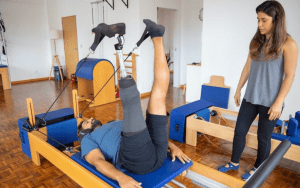

Cooking, cleaning, clothing, bathing, and using the restroom are just some of the daily activities that people with severe physical or cognitive limitations may need assistance with.
Nursing homes and other huge institutions, which are highly regulated and hospital-like but isolated from the population, were previously the only places for long-term care like this.
Most needing these types of assistance now opt to get it in the comfort of their homes by visiting home care aides.
For persons with disabilities, this is a question of whether they should have the option of living a constrained, regulated life while waiting for something to happen or whether they should have the flexibility to choose an integrated life of possibilities.
Long-term care patients often have no say in where they are treated. Even though many people might do just as well or better at home, they are still placed in nursing homes due to rules, state budgets, and poor programme design.
Nursing home costs comprised 81.3 per cent of Medicaid’s long-term care budget in 2000, while just 18.7 per cent paid for services provided in the community.
In 2012, 61.2% of older adults received care in nursing homes, and 38.8% received care in the community. While this is a positive step forward, the ratio still disproportionately favours institutional care even though nearly no one genuinelywants this option.
While Medicaid does require governments to cover the cost of nursing home care, this is not the case for home care, which has different standards depending on the state.
Advocacy and legal supports like the Americans with Disabilities Act (ADA) and the Olmstead Supreme Court decision (which set a mandate for community-based care) are steadily shifting the balance away from the “institutional bias” in long-term care.
The Employment Gap
The number of disabled individuals working increased by 10.8 per cent in 2014. It’s an increase from a very low employment rate, so there’s no reason to celebrate. In January 2019, only 26.7% of people with disabilities of working age were employed. In contrast, the employment rate for people without disabilities was 71.2%.
In addition to facing discrimination, people with disabilities often report being stuck in a cycle of poverty and involuntary inactivity because increasing their income at work poses the risk of losing essential benefits due to asset caps.
If a disabled person ever “got ahead” by working, they would lose eligibility for Social Security, Medicaid, or Medicare benefits, leaving them even poorer. Some hope that the recently enacted ABLE Act may help. Still, it won’t apply to everyone, and it’s unclear how much of an impact it will have on job “disincentives.”
Specialized Instruction
If disabled people’s education is inadequate or lacks relevant credentials, it will be difficult to increase their employment rates. The educational outlook for students with disabilities in the United States is, unfortunately, complex.
Integration into society at large and tangible results are two of the most telling indicators of success. Eighty-nine point nine per cent of students with disabilities who received special education spent at least 40 per cent of their school day in “regular” classrooms with students who did not have disabilities in 2011-2012.
The remaining students spent more or all of their day in classes with only students with disabilities. However, rates vary widely from state to state, and many children with disabilities spend most of their school days in isolated classrooms.
Higher education presents unique challenges for students with disabilities since, unlike in K-12, students are expected to take the initiative in arranging their own accommodations and support services. Faculty members often insist on maintaining their independence in this area.
The results are better than many would have guessed, but they are still inadequate. Eighty per cent of pupils enrolled in public high schools graduated on time in 2011-2012.
Disabled students’ graduation rate that year was only 61%. The remaining impaired students either “aged out” of public school eligibility at age 21, dropped out or left school with a non-diploma certificate that is not recognized as a diploma for most purposes.
(3) Disabled People Face Seven Unique Difficulties.
There are several obstacles that a person with a disability must overcome to find and hold a job in an office setting. People with disabilities may receive lower wages than their nondisabled coworkers in various situations.
1: Employer Scepticism


Due to widespread scepticism and false beliefs about people with disabilities, many business owners view hiring one as a sign of weak management. Discrimination against people with disabilities stems from society’s unwillingness to see past their impairments and see them as fully human.
Although many people with disabilities can find gainful employment, once there, they often feel like outsiders due to the limited responsibilities their employers assign them.
Disabled people’s anger in such situations might lead to sadness and a loss of confidence. If a company doubts an employee’s talents, that’s not a good sign. One of the most qualified applicants could be rejected because of this mistrust in their abilities.
Interestingly, given the chance, some people with disabilities can excel at their jobs and generate significant revenues for their companies.
2. A Failure to Educate
Individuals with low levels of education have a harder time finding employment than those with higher levels of education, whether they have a disability or not. These tasks are infeasible for people with mobility issues, vision impairments, etc.
The problem with disabled students’ education is not that they don’t want to learn but can’t. It’s possible that some people with learning disabilities never attended school their entire lives, either because their parents were too ashamed to send them or because they were too slow to learn.
However, many people with disabilities succeed in school, get degrees, and secure jobs with prestigious companies and organizations. However, this is not as simple as it may seem, as some companies would rather hire a high school graduate with no disability.
3. Stuck in Abject Poverty
When a person is born into poverty or their family spends all of their money on the person’s care, they may never be able to escape their situation.
Some people with disabilities are abandoned by their families and spend their formative years in institutions for people with disabilities. No matter how qualified a person is, poverty will prevent them from attending an interview professionally.
They don’t leave their homes because they don’t want to work but because they can’t afford to take advantage of training possibilities that might lead to employment.
4. Social Disgrace
If a disabled person does not get along with their coworkers, it might be difficult for them to hold down an office job.
Stigmatization of people with disabilities is common, especially if their impairments are obvious, such as a physical one that prevents them from walking. Some workers are kept apart for fear of spreading the illness between themselves.
Since no one would intentionally participate in a fight that would leave the other person with a disability, this is an extremely negative assumption.
5. Supply and Demand Imbalance
Because people with disabilities are more likely to leave their jobs than people without disabilities, this creates a significant employment gap. The motives for departure are plain to see.
Therefore, it is recommended that businesses provide employees with pleasant working conditions. You might have trouble using the stairs or finding your chair in an unfamiliar office without the proper accommodations for people with disabilities.
The number of depressed people who take their own lives can be reduced if more attention is paid to the needs of people with disabilities. Because of their condition, many people live in poverty and solitude.
Yet, their employers still expect them to work in hostile environments. Workplace bullying and discrimination are major contributors to mental health problems for people with disabilities.
6. Accommodations and Transportation Options


As was previously said, many establishments do not provide adequate facilities for people with disabilities. As a result, it becomes nearly impossible for people with impairments to manage their careers and other aspects of their lives.
People who use wheelchairs, for example, need space for movement. If employees are on the upper floors, the company should provide them access to a lift or escalator.
Many businesses will have to make expensive adjustments so disabled employees may work in conditions that suit their needs, but this is the law.
Suppose a person in a wheelchair cannot move freely throughout the building. In that case, they cannot do the most basic activities, such as using the lavatory.
7. Pessimistic Outlooks
Some people have an irrational hatred for people who are disabled. Because they hate working together, they generate as much trouble for themselves as possible. People like that lower the self-esteem of people with disabilities and make them feel like outsiders in the workplace.
Many businesses are reluctant to hire people who identify as disabled due to the prevalence of negative perceptions about people with disabilities and those who keep a close eye on them in case they make a mistake. The company’s top brass attitudes towards disabled employees could have far-reaching, everlasting consequences.
(4) Solutions to the Barriers for People With Disabilities
Face in Everyday Life
American advocate for people with disabilities and One Young World Ambassador Kristin Duquette. She is deeply interested in adolescents with disabilities, sports, and self-determination.
She has broken three junior national records and set five Paralympic records for the United States. In 2010, she captained the U.S. swimming team in the Greek Open. She also created the A Day in a Wheelchair college empowerment programme, which advocates for the equal value of people with disabilities.
Despite the positive impact that the Americans with Disabilities Act has had on millions of people’s lives, it is clear that there are still exclusionary gaps 25 years after the law’s passage. Disability rights activists continuously fight for basic civil rights despite the ADA’s goal of helping individuals with impairments fully participate in American society.
It would be simple to assume that the ADA has ensured that all Americans with disabilities enjoy full equality and are safe from discrimination. To pretend racism doesn’t exist now that we have an African-American president would be to desire the same thing.
Whether you identify as disabled or not, you share the responsibility and power to make our world more welcoming for all people. Here are ten ways we may continue to make our environment more tolerant of persons with disabilities, based on anything from lived experiences to listening to the disability community.
One is to Recognize the Value of the Disabled Community as a Customer Base.
Including people with disabilities as a potential market and customer is still a progressive idea. We make up the largest minority worldwide but are always forgotten regarding advertising and promotion.
While this is partly due to the wide range of needs within the disabled community, it is important to remember that these groups of consumers (and their families) represent a sizeable market.
Models with impairments are progressively making their way into the fashion industry and advertising campaigns, but this should be the standard rather than cutting-edge.
People With Disabilities are Ambitious and Eager to Work; Hire Them.
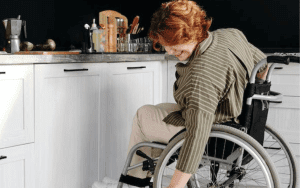

The news outlet NPR claims that “fewer than 1 in 5 disabled adults are employed.” According to CNN Money, “disabled workers earn about $9,000 less annually than nondisabled workers,” using data from the Census Bureau on median annual income. In the early 1990s, that difference was less than $6,000.
There is still discrimination against people with disabilities in the workplace, including being passed over for a job or not getting an interview. In the end, though, businesses must view each employee, including any impairments, as a strength rather than a weakness.
Boost Political Representation of People with Disabilities
How many local, state, or federal politicians and government officials do you know that are disabled?
Many people who work in political offices deal with a wide range of disabilities. If you look closely enough, you can start to notice them.
But are we inspiring the next generation of disabled people to join politics?
How often do local and national political campaigns include the voices of people with disabilities?
Compiled a survey about voting and accessibility barriers for people with physical, cognitive, and sensory impairments for the 2012 General Election Cycle.
The lack of automatic door openers, American Sign Language (ASL) interpreters, Braille signs or ramps, narrow doorways, and inaccessible voting machines are just some of the architectural, attitude, and technological barriers that people with disabilities still face when exercising their rights to vote, as stated in the NCD’s Report.
In addition, certain people with intellectual disabilities were denied the right to vote because their capacity as voters was questioned. This cannot continue.
Bring Disability History into Classrooms
If people with disabilities don’t learn about their past, they won’t be able to recognize and embrace it. Without instruction in civics, it will be impossible for the community to accept its members.
It is not common practice for the Americans with Disabilities Act (ADA) to be included in the curricula of schools across the country. If you insist, I guess. In middle school, we had a unit on the Voting Rights Act.
Still, it wasn’t until an intermediate class in college that I was introduced to the Americans with Disabilities Act. In addition, not all universities now offer courses in Disability Studies since this is still a relatively new field of study. Our community will not be truly accepting of disabled people until their history is taught in schools.
Increase School-Wide Social Acceptance.


There needs to be a shift in our collective cultural understanding about how to respect and engage with people who are disabled. That shift needs to start in kindergarten. Differentiality amongst our peers is something to be celebrated.
Less prejudice and more social acceptance can be achieved if this is taught early. Children with and without impairments benefit from learning together because it teaches everyone to value each child’s unique abilities. Our collective duty as a society is to advocate for the equal treatment of all its members.
Use More Disabled Actors in Mainstream Media.
More actors with disabilities should perform roles resembling those of persons with impairments. It’s time to stop casting performers without disabilities in positions that require them to portray those with impairments.
It makes sense to cast a nondisabled actor to portray a character before an accident or handicap, but what about in films or T.V. shows where the protagonist already has a disability?
What better way to describe someone with a disability than by someone who lives with one?
Furthermore, our media still has room for improvement in portraying people with disabilities.
Give Disabled Athletes College Scholarships
Disabled athletes should be actively sought out by colleges for scholarship opportunities due to their sporting prowess. Despite being chosen to compete for Team USA at international matches when I was a senior in high school, I was never noticed or offered a college scholarship for my athletic prowess because my times were consistently slower than those of my non-disabled competitors.
My inability to walk normally was celebrated as a source of motivation for the school rather than recognized as a dedicated comrade who scored goals in the competition. Our next generation deserves better.
Ensure Everyone Has Access to Flying
Many people with impairments have full, productive lives as respected professionals in various disciplines. That is until they get to the airport and realize they need the Special Services Request or won’t have access to the lavatory during the flight.
Many people who need wheelchairs or other mobility aids have had bad luck at airports or in the air, such as being stranded for hours without a chair or bathroom. It is shocking and frustrating to see how little consideration is given to disabled people when planning trips.
The “just ask, just listen” philosophy can greatly improve the customer service the Special Services Request staff provides with some training. The best way to interact with disabled tourists is to find exactly what they require from you.
Major airlines should also do more to help persons with impairments by installing accessible restrooms. The lack of a toilet on long flights prevents many persons with impairments from taking vacations. Shockingly, many businesses refuse to make accommodations for the basic human rights of those who are disabled.
Recognize the Existence of Police Brutality Towards Those with Disabilities


Did you know there is a shortage of statistics on police brutality towards persons with disabilities?
Isn’t it incredible that there is no documentation of this?
The Hill reports that “there are no reliable figures on how many people with disabilities were involved in altercations with police.” While it’s true that more law enforcement organizations may benefit from disability training, the wide range of impairments out there makes it impossible to generalize.
It’s embarrassing that no one is keeping track of these numbers, and more significantly, it forces us to examine why we don’t consider this a major problem.
Remember that Disabled People Are People, Too
It’s fascinating to consider how easily we may reduce a human being to a single perspective, forgetting the complexity and multifaceted nature of the entity they truly are. We tend to overlook that a person’s life is more than the sum of the parts we perceive when we observe them in isolation.
It’s easy to forget that a person with a handicap is, first and foremost, a human being who experiences the same range of emotions as anybody else, including desire, talent, skill, pain, and loss. All humans, including those with physical or mental impairments, have fundamental human qualities.
(5) Successful Methods
Microsoft
Microsoft has been a leader in advocating for inclusive workplaces and hiring practices for people with disabilities for quite some time. The firm’s mission includes working to close the job gap between those with and without disabilities.
Employers can find useful materials, such as blog articles and videos, on their website’s “Accessibility” page. Inclusion in the workplace, accessibility, disability etiquette, and the employment process are just a few of the many areas addressed by these materials.
Microsoft’s commitment to making its products accessible to people with disabilities is highlighted on the company’s website. One such program that offers both a screen reader and real-time transcription of meetings is Microsoft Teams.
Microsoft will likely direct part of its resources towards enhancing the web and technology in these ways due to the existing lack of discussion and awareness of the need for such assistive tools within society.
Aggies Raise the Bar
Utah State University provides students with intellectual impairments access to the Aggies Elevated Comprehensive Transition Programme. A two-year credential in Integrated College and Community Studies is available to participants.
Aggies Elevated is one of the few programmes in the Intermountain Region that offer on-campus housing for students with disabilities, allowing them to live with their peers and fully integrate into campus life.
The main goal of Aggies Elevated is to get students ready for the workforce after they graduate, as stated on the official website. For this reason, the programme provides an exclusive sequence of classes known as the Career Success Sequence.
This curriculum includes career seminars, social skills seminars, and internship seminars. These classes are designed to complement one another in giving students a well-rounded education that will prepare them for life beyond college.
The program’s goals include teaching students how to take care of themselves financially and teaching them to be more accountable adults in the workplace. One hundred fifteen volunteers assist students in learning how to navigate the local transit system, prepare meals, shop for groceries, and participate in extracurricular activities.
Therefore, Aggie Elevated and other such programmes can aid kids with intellectual disabilities overcome challenges like social isolation.
(6) STUDENTS WITH DISABILITIES: PROBLEMS AND OPTIONS


Learning, imagination, and friendships all flourish in a school environment. Regardless of the student’s age, a classroom should be an inviting and safe environment where they can learn and develop.
We can’t say the same for everyone, though. Students with impairments face additional challenges in the classroom when adequate support is unavailable. Sometimes, kids’ needs aren’t met, making it hard for them to get along with their peers, whether overwhelmed, overstimulated, or entirely disoriented.
Five Difficulties and Ways to Overcome Them When Working with Disabled Students
Problem: A student with a disability may have trouble staying still or concentrating throughout class. A student with a handicap may find it difficult to pay attention to the teacher due to distractions such as the classroom environment, other students, and the teacher’s presentation materials.
The solution for the educators to make tidy classrooms a priority. Keeping things nice and orderly can make it easier to concentrate. Teachers can also encourage student engagement through the use of a variety of playful systems of organization.
Problem: Some impairments make interacting with others difficult or confusing. This already complicated situation is further complicated by the potential for peers to hold unfavorable views or preconceptions towards people with impairments. Having friends is a common challenge for students who have disabilities.
The solution: recognize the value in learning from one’s peers. Teachers should pair pupils with and without disabilities whenever possible. Students can meet new people and benefit from the perspectives and experiences of their classmates.
All students can benefit from increased access to peer mentoring programmes, which can help them build confidence, self-reliance, and problem-solving abilities. This is the finest way for students to encourage one another and make new friends!
Problem: Students with learning differences, such as ADHD or dyslexia, may take longer than their peers to master reading and writing tasks. A student’s frustration and discouragement are common outcomes of falling behind.
The answer is that there isn’t one single way that students learn. All pupils learn in different ways. Therefore, teachers need to be adaptable. Recognize that every one of your students is an individual and cater to their learning preferences.
Problem: Students with disabilities are hampered in their education when they cannot fully participate in regular classroom activities.
Inadequate student accommodations is a common issue?
Resource and structural constraints pose challenges for numerous educational institutions. As a result, students may not receive the necessary support to succeed academically or may face unnecessary barriers to their learning experience.
Schools must prioritize providing adequate resources to ensure all students receive the support they need to achieve their full potential.
Take action on behalf of disabled pupils. Vocal support for kids with disabilities is needed from parents, educators, and other school personnel, including providing assistive technology for nonverbal students, installing wheelchair-accessible doorways, and hiring paraprofessionals with expertise in special education.
If you feel there isn’t enough equipment in the classroom, speak up. After all, a professor is just one person. Raise their voices so they may demand more accessible schools!
Problem: Some educators overestimate or underestimate the severity of their pupils’ impairments. This situation hinders both the educator and the learner.
The solution is for each disabled student to have an individualized education programme (IEP) with explicit accommodations, adaptations, and goals. Educators are responsible for learning about their pupils’ various impairments and how to accommodate them best.
Instead of using a cookie-cutter approach to accommodating kids with impairments, schools should instead do needs assessments. Teachers must recognize that each kid is an individual who faces their own set of challenges and comes prepared to meet their needs.
(7) Suggestions for the Future


First Recommendation: Make All Standard Policies, Procedures, And Services Available.
People with disabilities have the same basic requirements as everyone else: they want to be well and happy, have a stable income and social life, expand their knowledge and abilities, and participate fully in their local communities.
These requirements can and should be fulfilled by standard services and programming. The human rights of people with disabilities are met by mainstreaming, which is also more efficient.
Through “mainstreaming,” governments and other stakeholders guarantee that people with disabilities have the same access to and benefits from public-facing services as everyone else. We need to figure out what’s stopping others from joining in and then do whatever we can to eliminate that.
To succeed, mainstreaming must have buy-in from top to bottom and be factored into new and existing laws, standards, policies, strategies, and plans. Techniques such as universal design and reasonable accommodation implementation should be prioritized.
Specific measures, such as specialized programs and services (see Recommendation 2), are necessary with good planning, adequate human resources, and sufficient financial investment to ensure that the different needs of persons with disabilities are adequately fulfilled through mainstreaming.
Second Suggestion: Fund Disabled-Oriented Programmes and Services
Some people with disabilities may need specialized services in addition to the typical fare of healthcare, education, and social support. Wheelchairs, hearing aids, and walking aids are just a few assistive technologies that can help a person regain mobility, hearing, and independence via rehabilitation.
Care needs can be met through various well-regulated community-based assistance and support services, allowing individuals to maintain independence while participating in their communities’ economic, social, and cultural activities. Employment doors can be unlocked through vocational rehabilitation and training.
Better, more accessible, flexible, integrated, and well-coordinated multidisciplinary services are needed, especially during transition periods, such as when a client is moving from receiving child services to adult services.
Reviewing the coverage, efficacy, and efficiency of currently implemented programs and services is essential. Modifications should be tried in real-world settings, supported by research, and culturally sensitive.
3rd recommendation: Adopt a National Strategy And Action Plan For People With Disabilities
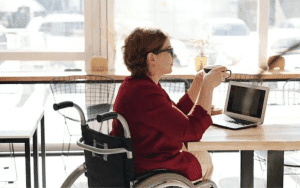

It is proposed that a national disability strategy and plan of action be created in addition to including disability in all development strategies and action plans.
A national disability strategy should address both mainstream policy and program areas and specific services for persons with disabilities, outlining a unified and comprehensive long-term vision for enhancing the lives of people with disabilities.
All relevant government ministries, NGOs, professional groups, disabled people and their representative organizations, the general public, and the private sector should collaborate on developing, implementing, and monitoring a national strategy.
The strategy and action plan should be informed by scenario analysis, which should consider the following:
- The prevalence of disability.
- The needs for services.
- The social and economic position of those with disabilities.
- The efficacy and gaps in current services.
- The environmental and societal barriers that those with disabilities face.
The plan’s success may be evaluated if it sets clear goals. The method of action makes the strategy work in the here and now by outlining specific steps to take and deadlines by which to complete them, along with setting goals, designating accountability, and determining how to fund the endeavour.
There must be mechanisms to establish who is accountable for what regarding resource management, monitoring, decision-making, and reporting.
Suggestion No. 4: Include Those Who Are Disabled In The Process
Disabled people often have fresh perspectives on their condition and its implications. It is imperative to incorporate individuals with disabilities into the development and execution of policies, regulations, and services.
Doing so not only complies with legal requirements but also promotes inclusivity and equity. Therefore, it is recommended that organizations engage with disabled individuals throughout the process to ensure their needs are met and their perspectives are considered.
This approach aligns with the principles of social responsibility and underscores the importance of valuing diversity and promoting inclusion.
Organizations representing individuals with disabilities may benefit from training and resources to help them better serve their members. Service delivery, such as information provision, peer support, and independent living, is another area where they might be useful with the right amount of development and funding.
People with disabilities should have a voice in decisions that directly affect their lives, including those related to their health, education, rehabilitation, and participation in the community.
Individuals may require assistance with supported decision-making to communicate their preferences and needs effectively. It is important to provide support that enables them to understand their options and make informed choices.
This can involve the provision of information, guidance, and encouragement in a manner that is respectful, sensitive, and tailored to their unique circumstances. By facilitating supported decision-making, we can empower individuals to exercise their rights, express their independence, and achieve their goals.
Suggestion no 5: Boost The Availability Of Human Resources


- Education, health care, rehabilitation, social protection, employment, law enforcement, and the media all play crucial roles in fostering an environment free of discrimination and open to full participation.
- Effective education, training, and recruitment can increase the capacity of a company’s human resources. Developing effective methods to improve the proficiency of employees is an essential early step in achieving success.
- By providing opportunities for training and development, businesses can equip their workforce with the knowledge, skills, and tools necessary to perform at their best. Such efforts can enhance productivity, job satisfaction, and overall performance.
- In business, where competition is fierce and the landscape constantly evolves, it is imperative to remain vigilant and adaptable to thrive. Investing in employee development is a smart and strategic decision that can yield significant returns.
- And skills is to take stock of where they now stand. Current curricula and accreditation programs should incorporate disability-related training grounded in human rights principles. Existing service providers and administrators should be offered ongoing education and development opportunities.
- Health care for persons with disabilities can be made more accessible and cheap in several ways, including by strengthening the skillsets of primary care providers and making specialists readily available when needed.
- There is a worldwide shortage of professionals in special education and rehabilitation disciplines. Training requirements for various rehabilitation staff might help fill in the gaps caused by deficiencies. Carers and sign language interpreters are also in limited supply. Some workplaces and industries could benefit from measures taken to increase employee retention.
Sixth Suggestion: Make It More Affordable And Get Sufficient Funds
- Public services for people with disabilities are often underfunded, reducing their availability and diminishing quality. To ensure that the intended recipients receive sufficient quality and quantity benefits, adequate and stable funding of these services is essential.
- Devolving funds to people with disabilities for consumer-directed care, encouraging public-private collaborations (especially with non-profits), and contracting out service provision are all ways to improve service delivery.
- Budgetary considerations about the feasibility and long-term viability of the proposed initiatives should be made during the formulation of the national disability strategy and accompanying action plans. More cost-effective solutions can be designed and implemented if the costs and outcomes of programs are tracked and reviewed.
- Disabled individuals and their families frequently incur astronomical out-of-pocket costs. It is imperative to expand the coverage of health and social insurance, guaranteeing equal access to public social services for individuals with disabilities and ensuring that the safety nets aimed at alleviating poverty benefit the most vulnerable members of the population with disabilities.
- Such measures are critical in promoting a fair and just society wherein all individuals have access to the resources and support they require to lead fulfilling lives. Programs are all things to think about if you want to help produce goods and services that are more affordable for people with disabilities and reduce the additional costs associated with disability.
Seventh Recommendation: Raise Disability Awareness and Comprehension Among the General Public
- An accepting culture is built on mutual respect and comprehension. Therefore, it is critical to raise awareness, challenge stigmas, and provide accurate portrayals of people with disabilities.
- School districts, for instance, should promote a culture of acceptance and respect for individual differences. It’s important to get businesses to realize they have a duty to their disabled employees.
- Gathering data on people’s disability-related knowledge, beliefs, and attitudes might reveal understanding gaps that can be addressed through advocacy, policy change, and outreach.
- Social marketing efforts aimed at altering public perceptions of taboo topics like HIV/AIDS, mental illness, and leprosy should be considered by government agencies, non-profits, and trade groups. Involving the media is crucial to spreading positive stories about people with disabilities and their families, which is why these initiatives are so important.
Eighth Suggestion: Streamline the Way We Track Disabilities
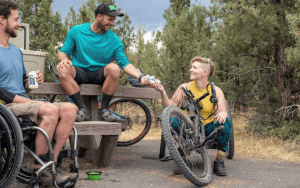

- Developing methodologies for gathering information on individuals with disabilities is of utmost importance. We must implement effective systems that accurately and efficiently collect data on this population segment.
- To provide adequate support and resources, it is crucial to understand the needs and challenges encountered by individuals with disabilities. This information can guide the development of effective interventions and services that address the unique needs of this population.
- Such actions are crucial for promoting inclusivity and equity in our community and ensuring everyone has an equal opportunity to thrive., tested across cultures and implemented uniformly globally.
- For the national and international implementation of the CRPD, benchmarking and tracking progress on disability policies require standardized and internationally comparable data.
- Disabled people should be counted in national surveys. Internationally comparable statistics can be obtained using ICF-based uniform definitions of impairment.
- Better efforts to remove obstacles and provide appropriate services for individuals with disabilities can be made when more information is known about the population of people with disabilities in a given country.
- The United Nations Washington Group on Disability and the United Nations Statistical Commission have recommended conducting a national population census as a first step.
- If a national household survey, national health survey, general social survey, or labour force survey already exists, adding questions about people with disabilities would be a cost-effective and efficient way to collect this data.
- Disaggregating data by demographic characteristics like age, sex, race, and socioeconomic position can help researchers learn more about specific subsets of people with impairments.
- Dedicated disability surveys can also collect more detailed data on aspects of disability such as prevalence, health issues related to impairment, service utilization, and rehabilitation needs.
- Standard handicap identifiers make administrative data collection a valuable resource for learning about service recipients and the number, nature, and cost of services provided to them.
Recommendation 9: Improve and Fund Disability Studies
- Research is crucial for educating the public, shaping disability policy and programming, and maximizing limited resources.
- Among the many suggested topics for future disability studies in this Report are:
- disability and how to assess it; the effect of environmental factors (policy, physical environment, attitudes)
- the well-being and quality of life for people with impairments;
- Impediments to general and targeted services and strategies for overcoming them.
- Programs for low-income communities that prioritize accessibility and universal design;
- the relationships between environment, health, and disability, as well as between disability and economic hardship;
- How much does having a disability cost, and whether or not government funding on disability programming is well spent?
- Research in low- and middle-income nations requires targeted investments in human and technical capabilities. It’s important to train enough researchers to reach a critical mass in disability.
- Epidemiology, disability studies, health and rehabilitation, special education, economics, sociology, and public policy are the only fields where researchers’ abilities should be honed. Opportunities for international study and research that connect higher education institutions in low- and middle-income nations are also valuable.
(8) Putting Suggestions Into Practice
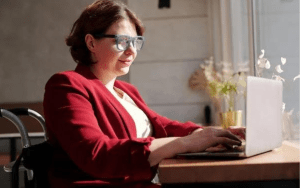

The recommendations can’t be implemented without the full support of many different parties. Although governments at the national level play the biggest part, other actors are also crucial. Some of the steps that the various parties involved can take are highlighted below.
- Regulatory bodies have the potential to:
- Measures for ensuring compliance and enforcing the law should also be reviewed and revised to align with the CRPD.
- Analyze current policies, processes, and services for people with and without disabilities to determine where improvements might be made.
- Create a unified approach to addressing the needs of people with disabilities across all levels of government by developing a national strategy and action plan.
- Control the delivery of services by establishing and enforcing norms in this area.
We must allocate sufficient resources to support implementing the national disability strategy and action plan.
This will enable us to address the needs of individuals with disabilities nationwide and ensure they have access to the necessary resources and support to live fulfilling lives. Investing in this initiative can promote greater inclusivity and equality for all members of our society. And ensure that existing publicly supported services receive enough funding.
- Adopt national accessibility standards and mandate their implementation for all new construction, public transportation, and electronic and written communication.
- Implement safeguards to prevent the plight of people with disabilities from worsening and to maximize their participation in existing efforts to reduce poverty.
- When possible, provide disaggregated data based on a person’s disability status and make it part of the national data collection systems.
- Create awareness-raising initiatives to help the general public learn more about disability.
- Make it possible for disabled individuals and others to file complaints about violations of their human rights and the non-enforcement of relevant laws.
Organizations Working for the United Nations Development Agenda Can:
- Incorporate the two-pronged (mainstreaming and targeted) approach to disability into international aid programs.
- Share knowledge and work together to set priorities for initiatives, share successes and failures, and cut down on wasted time and resources.
- Assist developing nations with the resources to improve their infrastructure and develop more effective policies, processes, and services.
- Make an impact on creating internationally standardized research methods for studying disabled individuals.
Statistical findings that pertain to people with disabilities should be published regularly.
Groups that Advocate for the Disabled Can:
- Help those with disabilities understand their rights, learn to navigate daily life without assistance, and grow as individuals.
- Helping children and families with special needs succeed in school is a top priority.
- Advocate for the community’s rights and interests to government officials and service providers on a global, national, and local scale.
- Work with academics to aid in the evaluation and monitoring of services and assist with the growth of services through the funding of applied research.
- For example, campaigns, activism, and disability equality training can help educate the public and professionals on the rights of people with disabilities.
- It is important to conduct audits of surroundings, transportation, and other systems and services to remove barriers.
Providers of Services May:
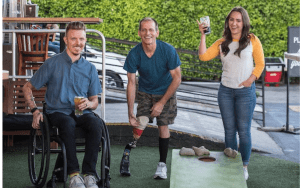

- Together with local disability groups, conduct access audits to look for information and physical barriers that could keep people with disabilities out.
- Implement training when needed and involve service users in creating and delivering the training to ensure all staff members thoroughly understand disability.
- Facilitate the creation of customized service plans for people with disabilities and their loved ones.
- The delivery of services can be better coordinated and integrated using case management, referral systems, and computerized record-keeping.
- Ensure people with impairments know how to assert their rights and file complaints.
Institutions of Higher Learning Can:
- Avoid obstacles that prevent hiring and involving people with disabilities on campus.
- Educate students on the human rights implications of disability in all professional training courses.
- Consult with organizations representing people with impairments as you study their daily experiences and the barriers that make their lives more difficult.
When it comes to :
- Foster inclusive and diverse workplaces.
- Help people with disabilities get hired by making it easier for them to apply for jobs, giving them access to appropriate accommodations if they need them, and encouraging workers who have become disabled to return to work.
- Help people with disabilities start and grow their enterprises by removing obstacles to obtaining microloans.
- Design a spectrum of high-quality life-cycle support services for people with disabilities and their families.
- Ensured disabled people can access all public spaces, workplaces, and residences you build.
- Make all information and communication technology (ICT) products, systems, and services accessible to people with impairments.
Local Groups Can:
- Think critically and make changes to one’s worldview.
- The rights of people with impairments must be safeguarded.
- Encourage disabled persons to take an active role in local affairs.
- Make sure that public spaces like schools, parks, and museums are accessible to those with physical impairments.
- Stop the abuse and harassment of disabled persons.
Disabled individuals and their loved ones can:
- Help others in the same situation as you by providing them with information, training, and advice.
- Do things like conducting access audits training on disability equality; and One effective way to support disability rights is by organizing campaigns in your local community.
- Advocacy campaigns represent an effective means of raising awareness and safeguarding the rights of individuals with disabilities.
- Efforts such as these possess significant potential to impact the general public’s perception of various matters.
- Policy initiatives and legal frameworks that impact the lives of those with disabilities. Advocacy campaigns can galvanize support and promote positive change by mobilizing stakeholders and leveraging key messages.
- Ultimately, these efforts serve to promote equality, inclusion, and social justice for disabled individuals while also fostering greater understanding and empathy within society as a whole.
- By working with like-minded individuals, you can create a strong and impactful message highlighting the need for equal opportunities and accessibility for all.
- Whether through social media campaigns, community events, or educational seminars, numerous methods exist to enhance the quality of life for individuals with disabilities. So why not take the first step today and start organizing your own disability rights campaign in your area?
- Get involved in social marketing and other efforts to raise consciousness.
- Take part in forums (global, national, and local) to set change priorities, shape policy, and direct service development.
- Get involved in studies.
For more informative stories click here,




